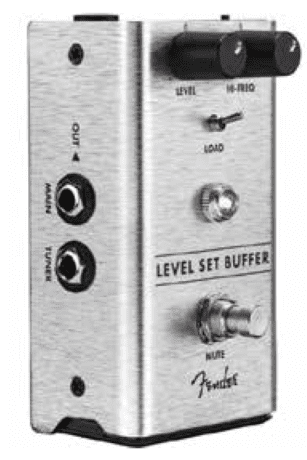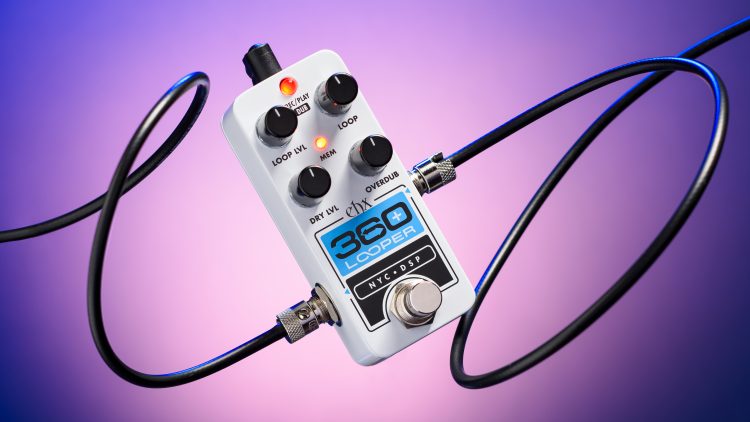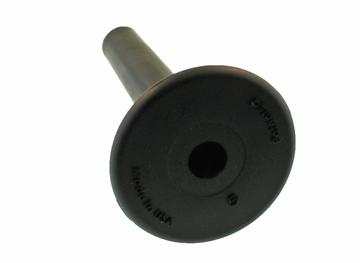 What a time to be alive. Between the vintage gear market, the consumer-to-consumer Internet market (eBay, craigslist, et cetera) and the phenomenal assortment of new pedals, guitar players have more options than ever to build out their sound. If you want to get noticed, you better do your homework to really understand what guitarists want, and then apply technical ingenuity to your manufacturing process, bringing high quality, great sounding pedals to market. This is precisely what Fender has done with their most recent lineup of pedals. I had the great pleasure to test out the Level Set Buffer, a utility pedal designed for complex pedal boards and/or professional musicians, and the Marine Layer Reverb, a wonderfully complex, rich, and mildly quirky reverb.
What a time to be alive. Between the vintage gear market, the consumer-to-consumer Internet market (eBay, craigslist, et cetera) and the phenomenal assortment of new pedals, guitar players have more options than ever to build out their sound. If you want to get noticed, you better do your homework to really understand what guitarists want, and then apply technical ingenuity to your manufacturing process, bringing high quality, great sounding pedals to market. This is precisely what Fender has done with their most recent lineup of pedals. I had the great pleasure to test out the Level Set Buffer, a utility pedal designed for complex pedal boards and/or professional musicians, and the Marine Layer Reverb, a wonderfully complex, rich, and mildly quirky reverb.
First the Level Set Buffer: the most practical application of this pedal is as a buffer to help maintain sound quality across your pedal board. Think of it as a master volume pedal.
It’s super transparent – it doesn’t do anything to your sound. Rather, it affords you flexibility as you approach the relationship between your different pedals, your amp and your guitars. If you use your amp’s FX loop, you can use this pedal to switch out to a tuner,
allowing you to full mute while you tune. It also has an on-board EQ designed to compensate for guitar switching mid-set. This is a utilitarian pedal for a professional musician. As with all of the pedals in this line, it’s very well built and easy on the eyes.
In stark contrast, the Marine Layer Reverb does change your sound. While some reverbs are subtle, this one can dial up a tapestry of ambience (not to say it can’t do subtle – it can). This is one of the more unique reverb pedals I’ve ever played with.
Aesthetically, this is a beautiful pedal. The light green brushed aluminum case, the bright jewel LED and the glamorous blue LED indicators all highlight the attention to detail that comes with this reverb.
 The Marine Layer Reverb has four knobs: Pre-Delay, Reverb Time, Damping and Level and 3 switches: Type, Variation and filter. This affords the player a wide assortment of reverb sounds, with the Type switching the algorithm between a hall, a room, and “special.” The Variation switch is a 2-position switch that changes the basic algorithm. For example, the Variation 1 of the Hall Type is your basic pad style reverb. Variation 2 emulates a plate reverb. The filter switch is an on/off toggle that activates a Lo-Pass Filter, pulling high frequencies out of the reverb signal to add some warmth.
The Marine Layer Reverb has four knobs: Pre-Delay, Reverb Time, Damping and Level and 3 switches: Type, Variation and filter. This affords the player a wide assortment of reverb sounds, with the Type switching the algorithm between a hall, a room, and “special.” The Variation switch is a 2-position switch that changes the basic algorithm. For example, the Variation 1 of the Hall Type is your basic pad style reverb. Variation 2 emulates a plate reverb. The filter switch is an on/off toggle that activates a Lo-Pass Filter, pulling high frequencies out of the reverb signal to add some warmth.
Reverb is all about simulating space – it’s one of the more complex algorithms out there and is, in my experience, very hard to get right. This pedal gets it right, adding a variety of different types of ambience that help transport the player to wherever it is they want to go.
I had the most fun with the Variation 2 of the Special setting, with a nice long Reverb time, and a moderate amount of Pre Delay (which adds a bit of delay before the Reverb actually kicks in, separating it from the dry signal). The Special algorithm adds a pitch-shifted higher octave along with a rich sense of space. It not only affected my sound, it transported me, as a player, to another space. Guitarists are constantly searching for anything that will trigger some bit of creative energy – I believe that it’s one reason that they collect so much stuff. This pedal did that for me – in a world where I apply a workmanlike approach to product reviews (play the thing, type the article…), I played with this pedal for an hour straight – it was evocative, mysterious, and really fun. Now, there’s no promise that everyone will have the same reaction that I had to this reverb pedal.
However, when thinking about what you want to offer to your customers, this seems like a bet worth making. All guitarists covet versatile, affordable, beautiful, and great sounding products. The Marine Layer Reverb is all those things. Doesn’t that sound like an easy sell?



























Looking Back on 2025: A Year of Controlled Chaos (Emphasis on “Controlled”)